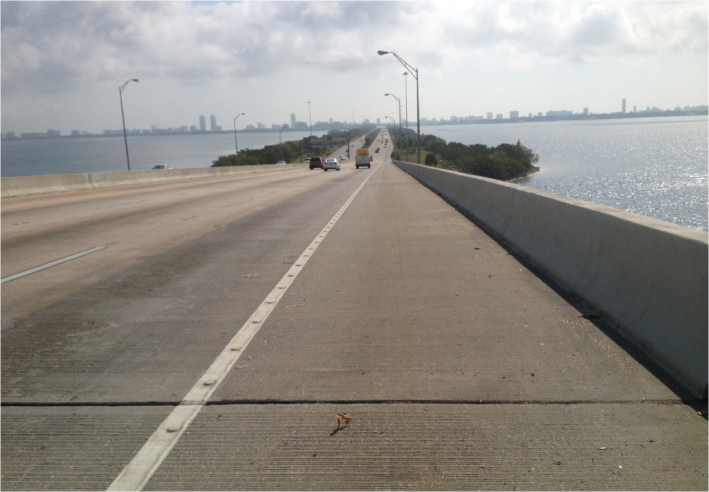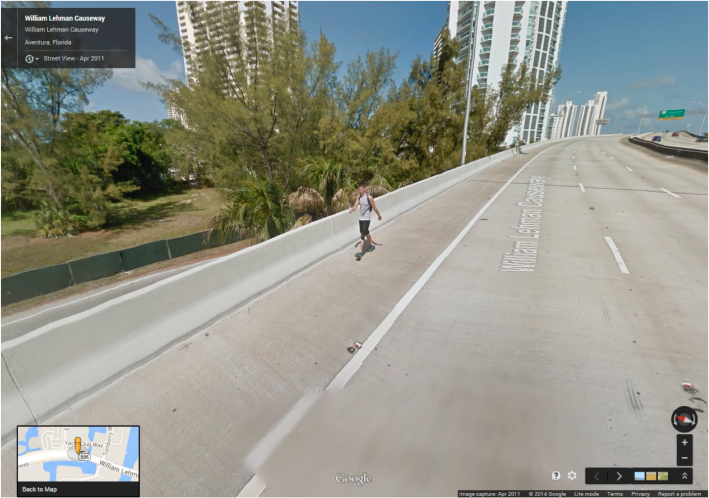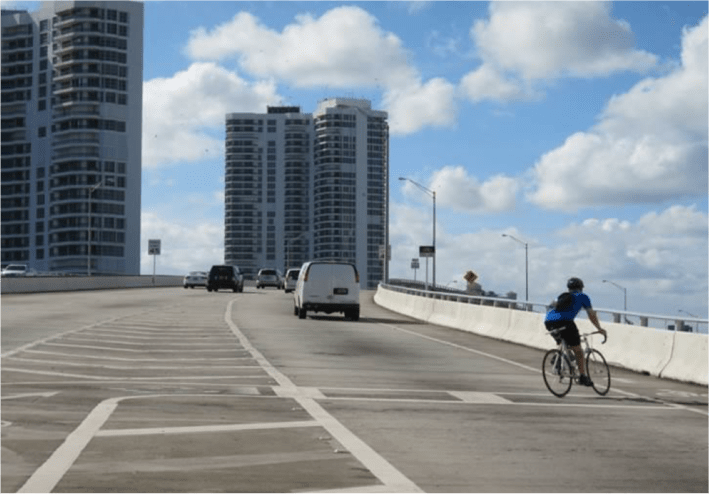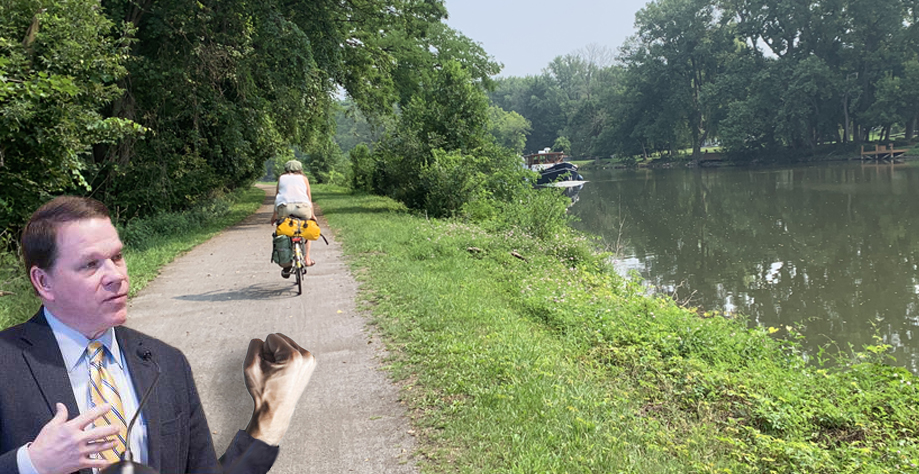
A few years ago, a person living in a working-class neighborhood of Miami and commuting to the tourism district in Miami Beach could pretty much forget about walking or biking there. Her choices were either to pay for the bus or buy a car, but healthy, active transportation was impossible -- or at least, illegal. Biking and walking were banned on the causeways between the mainland and the barrier islands.
But in 2012, the Florida legislature changed that by creating a minimum two-year pilot program permitting and accommodating bikes on limited access roads. The state DOT was directed to choose three roads for the experiment, all of which had to cross bodies of water and lie no less than two miles from the nearest bike crossing.
David Henderson of the Miami-Dade MPO and Stewart Robertson of the design firm Kimley-Horn both worked on the redesign. The presented their results to the Pro-Walk Pro-Bike Pro-Place conference in Pittsburgh earlier this month.
Julia Tuttle Causeway was one of the selected bridges. It’s a six-lane divided interstate highway that connects Miami with Miami Beach. About 105,000 vehicles cross it every day. The posted speed limit is 55 miles an hour.

Not a very friendly environment for bicycling. And yet, people did it.
People also biked on the William Lehman Causeway between Aventura and Sunny Isles Beach, about 15 miles north -- another six-lane, 55-mph road. And farther north, near Cape Canaveral, there’s the Pineda Causeway -- four lanes this time, but still 55 mph. And bicyclists still rode it.
The state of Florida is beginning to take bicycle safety seriously. Tired of being consistently ranked the most dangerous state in the nation for walking and biking, state Transportation Secretary Ananth Prasad launched the Bicycle/Pedestrian Focused Initiative and the state is beginning to build more bike lanes and other infrastructure for safe biking and walking. And the experiment in accommodating active transportation on these limited-access bridges is a bold attempt to correct the errors of the past.
But at a time when the bike advocacy movement is focusing on facilities that serve people aged “8 to 80” -- at a time when a 12-year-old named Isabella is the new spokesperson for low-stress bike networks that anyone can use safely -- the shoulders of high-speed bridges don’t really fit the bill. They’re not for “all ages and abilities.” It will still be the most confident -- or the most desperate -- who ride those routes.
The pilot project cost under a million dollars for the two Miami-Dade County bridges together. The most expensive part was adding a hand railing to the wall at the edge of the bridge -- there’s no wall between the bikes and the cars. In some cases FDOT and its team painted sharrows and crossings for cyclists to navigate tricky areas like on-ramps, sometimes they added green paint to point out conflict zones. They added rumble strips and striping that would vibrate and make noise if drivers veered out of their lane. They replaced some drainage grates with ones that wouldn’t be dangerous to bike tires. All in all, not a particularly expensive retrofit.

Keeping it cheap was one reason an “Isabella-friendly” re-design wasn’t in the cards. But also, FDOT wasn’t allowed to surrender the shoulder completely to cyclists, so they couldn’t put in any vertical barriers. Cars still needed to be prioritized. Sometimes drivers stop on the shoulder if they break down; sometimes they stop to go fishing. Enforcement on these bridges hasn’t increased, so cyclists can easily find their lane blocked and have to navigate those 55-mile-an-hour traffic lanes.
The end result is that more people are using the causeways than before -- when it was illegal -- but the numbers could be more dramatic with better protection. After the installation of the bike facilities, biking increased just 40 percent on the William Lehman Causeway. The numbers of the Julia Tuttle were somewhat more impressive, with a 167 percent uptick in bicycle trips on weekdays and a 68 percent increase on weekends.
The bicycling accommodations reduced travel distances for cyclists up to 75 percent, compared to traveling on adjacent corridors. “It highlights the viability of bicycling as a mode of transportation on these important corridors,” said David Henderson Miami-Dade MPO, “and it improves safety for those bicyclists who were already using those facilities,” in addition to attracting new ones.
The DOT is required to give the legislature a final report on the pilot program next year, and officials are hoping the authorization will be extended and expanded for allowing bikes on limited access facilities.





